|

ZOOX - December 2020, the autonomous vehicle company that was acquired this year by Amazon, revealed this week the product of six years of work: A purpose-built self-driving vehicle designed to carry people — and someday maybe even packages — in dense urban environments.
THE
AUTOMATED and ELECTRIC VEHICLES ACT 2018
2018
CHAPTER 18 [19th July 2018]
An
Act to make provision about automated vehicles and electric
vehicles.
Be
it enacted by the Queen’s
most Excellent Majesty,
by and with the advice and consent of the Lords Spiritual and Temporal,
and Commons, in this present Parliament assembled, and by the authority of
the same, as follows:-
THE
AUTOMATED and ELECTRIC
VEHICLES ACT 2018
Introductory
Text
PART 1 Automated vehicles: liability of insurers
etc
1.Listing
of automated vehicles by the Secretary of State
2.Liability
of insurers etc where accident caused by automated vehicle
3.Contributory
negligence etc
4.Accident
resulting from unauthorised software alterations or failure to update
software
5.Right
of insurer etc to claim against person responsible for accident
6.Application
of enactments
7.Report
by Secretary of State on operation of this Part
8.Interpretation
PART 2 Electric vehicles: charging
Introductory - 9.Definitions
Requirements and prohibitions
10.Public
charging or refuelling points: access, standards and connection
11.Large
fuel retailers etc: provision of public charging or refuelling points
12.Duty
to consider making regulations under section 11(1)(a) on request by
elected mayor
13.Information
for users of public charging or refuelling points
14.Transmission
of data relating to charge points
15.Smart
charge points
General and supplementary
16.Enforcement
17.Exceptions
18.Regulations
19.Report
by Secretary of State on operation of this Part
PART 3 Miscellaneous and general
20.Minor
and consequential amendments
21.Commencement
22.Extent
23.Short
title
SCHEDULE
MINOR AND CONSEQUENTIAL AMENDMENTS
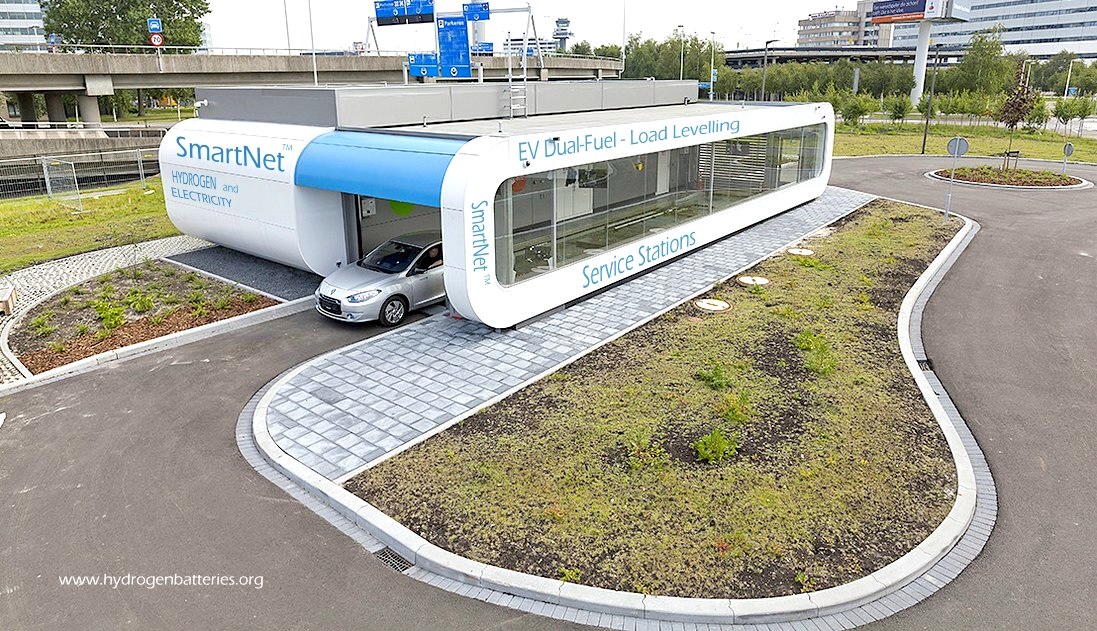
COMPATIBILITY -
Before
Whitworth standardized thread sizes, engineering compatibility was very
hit and miss. Now, we take metric thread sizes for granted, and how much
simpler for designers - not having to invent a new size for each
application. But with EVs, we don't seem to have learned that lesson yet.
Each model seems to have its own size pack. The SmartNet™ system caters
for all sizes of vehicles, battery or hydrogen, cartridge and plug in. One
size fits all - and we're going to need that, with 600,000 service
stations to replace in the next 29 years - at the very latest.
THE
AUTOMATED and ELECTRIC VEHICLES ACT 2018
2018 CHAPTER 18 [19th July 2018]
An Act to make provision about automated vehicles and electric vehicles.
Be it enacted by the Queen’s
most Excellent Majesty, by and with the advice and consent of the Lords
Spiritual and Temporal, and Commons, in this present Parliament assembled,
and by the authority of the same, as follows:—
Introductory Text
PART 1 Automated vehicles: liability of insurers etc
1
Listing of automated vehicles by the Secretary of State
(1) The Secretary of State must prepare, and keep up to date, a list of
all motor vehicles that —
(a) are in the Secretary of State’s opinion designed or adapted to be
capable, in at least some circumstances or situations, of safely driving
themselves, and
(b) may lawfully be used when driving themselves, in at least some
circumstances or situations, on roads or other public places in Great
Britain.
(2) The list may identify vehicles —
(a) by type,
(b) by reference to information recorded in a registration document issued
under regulations made under section 22 of the Vehicle Excise and
Registration Act 1994, or
(c) in some other way.
(3) The Secretary of State must publish the list when it is first prepared
and each time it is revised.
(4) In this Part “automated vehicle” means a vehicle listed under this
section.
2
Liability of insurers etc where accident caused by automated vehicle
(1) Where —
(a) an accident is caused by an automated vehicle when driving itself on a
road or other public place in Great Britain,
(b) the vehicle is insured at the time of the accident, and
(c) an insured person or any other person suffers damage as a result of
the accident, the insurer is liable for that damage.
(2) Where —
(a) an accident is caused by an automated vehicle when driving itself on a
road or other public place in Great Britain,
(b) the vehicle is not insured at the time of the accident,
(c) section 143 of the Road Traffic Act 1988 (users of motor vehicles to
be insured or secured against third-party risks) does not apply to the
vehicle at that time —
(i) because of section 144(2) of that Act (exemption for public bodies
etc), or
(ii) because the vehicle is in the public service of the Crown, and
(d) a person suffers damage as a result of the accident, the owner of the
vehicle is liable for that damage.
(3) In this Part “damage” means death or personal injury, and any
damage to property other than —
(a) the automated vehicle,
(b) goods carried for hire or reward in or on that vehicle or in or on any
trailer (whether or not coupled) drawn by it, or
(c) property in the custody, or under the control, of —
(i) the insured person (where subsection (1) applies), or
(ii) the person in charge of the automated vehicle at the time of the
accident (where subsection (2) applies).
(4) In respect of damage to property caused by, or arising out of, any one
accident involving an automated vehicle, the amount of the liability under
this section of the insurer or owner of the vehicle is limited to the
amount for the time being specified in section 145(4)(b) of the Road
Traffic Act 1988 (limit on compulsory insurance for property damage).
(5) This section has effect subject to section 3.
(6) Except as provided by section 4, liability under this section may not
be limited or excluded by a term of an insurance policy or in any other
way.
(7) The imposition by this section of liability on the insurer or vehicle
owner does not affect any other person’s liability in respect of the
accident.
3
Contributory negligence etc
(1) Where —
(a) an insurer or vehicle owner is liable under section 2 to a person
(“the injured party”) in respect of an accident, and
(b) the accident, or the damage resulting from it, was to any extent
caused by the injured party, the amount of the liability is subject to
whatever reduction under the Law Reform (Contributory Negligence) Act 1945
would apply to a claim in respect of the accident brought by the injured
party against a person other than the insurer or vehicle owner.
(2) The insurer or owner of an automated vehicle is not liable under
section 2 to the person in charge of the vehicle where the accident that
it caused was wholly due to the person’s negligence in allowing the
vehicle to begin driving itself when it was not appropriate to do so.
4
Accident resulting from unauthorised software alterations or failure to
update software
(1) An insurance policy in respect of an automated vehicle may exclude or
limit the insurer’s liability under section 2(1) for damage suffered by
an insured person arising from an accident occurring as a direct result of
—
(a) software alterations made by the insured person, or with the insured
person’s knowledge, that are prohibited under the policy, or
(b) a failure to install safety-critical software updates that the insured
person knows, or ought reasonably to know, are safety-critical.
(2) But as regards liability for damage suffered by an insured person who
is not the holder of the policy, subsection (1)(a) applies only in
relation to software alterations which, at the time of the accident, the
person knows are prohibited under the policy.
(3) Subsection (4) applies where an amount is paid by an insurer under
section 2(1) in respect of damage suffered, as a result of an accident, by
someone who is not insured under the policy in question.
(4) If the accident occurred as a direct result of —
(a) software alterations made by an insured person, or with an insured
person’s knowledge, that were prohibited under the policy, or
(b) a failure to install safety-critical software updates that an insured
person knew, or ought reasonably to have known, were safety-critical, the
amount paid by the insurer is recoverable from that person to the extent
provided for by the policy.
(5) But as regards recovery from an insured person who is not the holder
of the policy, subsection (4)(a) applies only in relation to software
alterations which, at the time of the accident, the person knew were
prohibited under the policy.
(6) For the purposes of this section —
(a) “software alterations” and “software updates”, in relation to
an automated vehicle, mean (respectively) alterations and updates to the
vehicle’s software;
(b) software updates are “safety-critical” if it would be unsafe to
use the vehicle in question without the updates being installed.
5
Right of insurer etc to claim against person responsible for accident
(1) Where —
(a) section 2 imposes on an insurer, or the owner of a vehicle, liability
to a person who has suffered damage as a result of an accident (“the
injured party”), and
(b) the amount of the insurer’s or vehicle owner’s liability to the
injured party in respect of the accident (including any liability not
imposed by section 2) is settled, any other person liable to the injured
party in respect of the accident is under the same liability to the
insurer or vehicle owner.
(2) For the purposes of this section, the amount of the insurer’s or
vehicle owner’s liability is settled when it is established —
(a) by a judgment or decree,
(b) by an award in arbitral proceedings or by an arbitration, or
(c) by an enforceable agreement.
(3) If the amount recovered under this section by the insurer or vehicle
owner exceeds the amount which that person has agreed or been ordered to
pay to the injured party (ignoring so much of either amount as represents
interest), the insurer or vehicle owner is liable to the injured party for
the difference.
(4) Nothing in this section allows the insurer or vehicle owner and the
injured party, between them, to recover from any person more than the
amount of that person’s liability to the injured party.
(5) For the purposes of —
(a) section 10A of the Limitation Act 1980 (special time limit for actions
by insurers etc in respect of automated vehicles), or
(b) section 18ZC of the Prescription and Limitation (Scotland) Act 1973
(actions under this section), the right of action that an insurer or
vehicle owner has by virtue of this section accrues at the time of the
settlement referred to in subsection (1)(b).
6
Application of enactments
(1) Any damage for which a person is liable under section 2 is treated as
if it had been caused —
(a) for the purposes of the Fatal Accidents Act 1976, by that person’s
wrongful act, neglect or default;
(b) for the purposes of sections 3 to 6 of the Damages (Scotland) Act 2011
(asp 7) (rights of relatives of a deceased), by that person’s act or
omission;
(c) for the purposes of Part 2 of the Administration of Justice Act 1982
(damages for personal injuries, etc Scotland), by an act or omission
giving rise to liability in that person to pay damages.
(2) Section 1 of the Congenital Disabilities (Civil Liability) Act 1976
(“the 1976 Act”) has effect for the purposes of section 2 of this Act
—
(a) as if a person were answerable to a child in respect of an accident
caused by an automated vehicle when driving itself if the person —
(i) is or has been liable under section 2 in respect of any effect of the
accident on a parent of the child, or
(ii) would be so liable if the accident caused a parent of the child to
suffer damage;
(b) as if the provisions of this Part relating to liability under section
2 applied in relation to liability by virtue of paragraph (a) above under
section 1 of the 1976 Act;
(c) as if subsection (6) of section 1 of the 1976 Act (exclusion of
liability) were omitted.
(3) For the purposes of section 3(1), the Law Reform (Contributory
Negligence) Act 1945 and section 5 of the Fatal Accidents Act 1976
(contributory negligence) have effect as if the behaviour of the automated
vehicle were the fault of the person made liable for the damage by section
2 of this Act.
(4) Liability under section 2 is treated as liability in tort or, in
Scotland, delict for the purposes of any enactment conferring jurisdiction
on a court with respect to any matter.
(5) An insurer or vehicle owner who has a right of action against a person
by virtue of section 5 does not have a right to recover contribution from
that person under the Civil Liability (Contribution) Act 1978 or under
section 3 of the Law Reform (Miscellaneous Provisions) (Scotland) Act
1940.
7
Report by Secretary of State on operation of this Part
(1) The Secretary of State must prepare a report assessing —
(a) the impact and effectiveness of section 1;
(b) the extent to which the provisions of this Part ensure that
appropriate insurance or other arrangements are made in respect of
vehicles that are capable of safely driving themselves.
(2) The report must be laid before Parliament no later than two years
after the first publication of the list under section 1.
8
Interpretation
(1) For the purposes of this Part —
(a) a vehicle is “driving itself” if it is operating in a mode in
which it is not being controlled, and does not need to be monitored, by an
individual;
(b) a vehicle is “insured” if there is in force in relation to the use
of the vehicle on a road or other public place in Great Britain a policy
of insurance that satisfies the conditions in section 145 of the Road
Traffic Act 1988.
(2) In this Part —
“automated vehicle” has the meaning given by section 1(4);
“damage” has the meaning given by section 2(3);
“insured person”, in relation to an insured vehicle, means any person
whose use of the vehicle is covered by the policy in question;
“insurer”, in relation to an insured vehicle, means the insurer under
that policy;
“road” has the same meaning as in the Road Traffic Act 1988 (see
section 192(1) of that Act).
(3) In this Part —
(a) a reference to an accident includes a reference to two or more
causally related accidents;
(b) a reference to an accident caused by an automated vehicle includes a
reference to an accident that is partly caused by an automated vehicle.
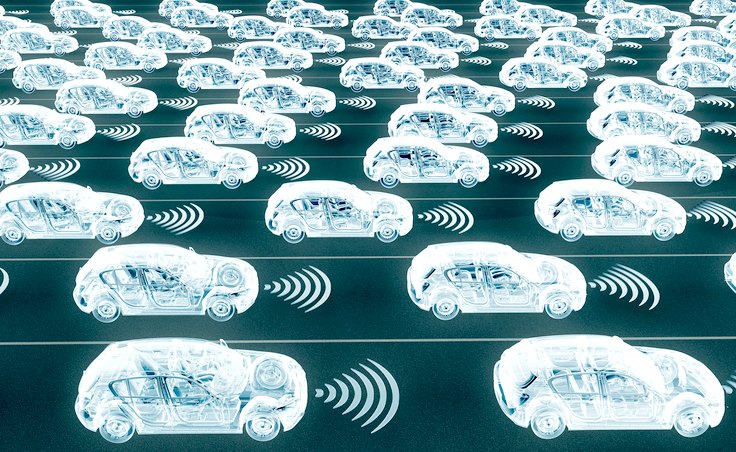
PART 2 ELECTRIC VEHICLES: CHARGING
Introductory
9.
Definitions
(1) For the purposes of this Part —
(a) “charge point” means a device intended for charging a vehicle that
is capable of being propelled by electrical power derived from a storage
battery (or for discharging electricity stored in such a vehicle);
(b) “hydrogen refuelling point” means a device intended for refuelling
a vehicle that is capable of being propelled by electrical power derived
from hydrogen;
(c) a charge point or a hydrogen refuelling point is a “public charging
or refuelling point” if it is provided for use by members of the general
public.
(2) In this Part —
“operator”, in relation to a public charging or refuelling point, has
the meaning given by regulations;
“prescribed” means prescribed by regulations;
“vehicle” means a vehicle that is intended or adapted for use on
roads.
Requirements and prohibitions
10.
Public charging or refuelling points: access, standards and connection
(1) Regulations may impose requirements on operators of public charging or
refuelling points in connection with —
(a) the method of payment or other way by which access to the use of
public charging or refuelling points may be obtained;
(b) performance, maintenance and availability of public charging or
refuelling points;
(c) the components of public charging or refuelling points that provide
the means by which vehicles connect to such points (“connecting
components”).
(2) Regulations under subsection (1)(a) may require operators —
(a) to provide a prescribed method of payment or verification for
obtaining access to the use of public charging or refuelling points;
(b) to co-operate with each other for the purposes of a requirement
imposed by the regulations (for example, by sharing facilities or
information);
(c) to take prescribed steps for the purposes of such a requirement (for
example, to provide information to a prescribed person).
(3) Regulations under subsection (1)(b) may, for example, require the
operator of a public charging or refuelling point to ensure that the point
complies with prescribed requirements (which may include technical
specifications).
(4) Regulations under subsection (1)(c) may, for example, require the
operator of a public charging or refuelling point to ensure that its
connecting components comply with prescribed requirements (which may
include technical specifications for connecting components or any related
equipment).
11.
Large fuel retailers etc: provision of public charging or refuelling
points
(1) Regulations may impose requirements on —
(a) large fuel retailers falling within a prescribed description, or
(b) service area operators falling within a prescribed description,
in connection with the provision on their premises of public charging or
refuelling points.
(2) Regulations under subsection (1) may, for example —
(a) require large fuel retailers or service area operators to provide
public charging or refuelling points;
(b) require public charging or refuelling points to be available for use
at prescribed times;
(c) require services or facilities prescribed by the regulations to be
provided in connection with public charging or refuelling points.
(3) In this section “large fuel retailer” and “service area
operator” have the meaning given by regulations.
12.
Duty to consider making regulations under section 11 (1) (a) on request by
elected mayor
(1) The Secretary
of State must consider making section 11(1)(a)
regulations in relation to the whole or part of a relevant area if —
(a) the mayor for the relevant area makes a request for such regulations
to be made,
(b) conditions 1 to 3 are met, and
(c) the Secretary of State considers that the mayor has complied with any
prescribed requirements before making the request.
(2) “Section 11(1)(a) regulations” means regulations under section
11(1) that impose requirements on large fuel retailers within section
11(1)(a).
(3) Condition 1 is that the Secretary of State is satisfied that, before
making the request, the mayor —
(a) published proposals for section 11(1)(a) regulations to be made in
relation to the whole or part of the relevant area, an
(b) consulted —
(i) each local authority any part of whose area falls within the relevant
area or, if the request relates to part of the relevant area, within that
part,
(ii) persons who would be likely to be subject to requirements under the
regulations (if made), and
(iii) such other persons as the mayor considers appropriate, in relation
to the published proposals.
(4) Condition 2 is that the mayor has given the Secretary of State a
summary of the responses to the consultation referred to in subsection
(3)(b).
(5) Condition 3 is that regulations have been made under section 11(3) in
relation to the meaning of “large fuel retailer”.
(6) If the Secretary of State decides not to make section 11(1)(a)
regulations in response to the mayor’s request, the Secretary of State
must notify the mayor of the decision and the reasons for it.
(7) For the purposes of this section —
(a) “relevant area” means the area of a combined authority or Greater
London;
(b) the mayor for a relevant area is —
(i) in the case of the area of a combined authority, the mayor for the
area elected in accordance with section 107A(2) of the 2009 Act;
(ii) in the case of Greater London, the Mayor of London.
(8) In this section —
“the 2009 Act” means the Local Democracy, Economic Development and
Construction Act 2009;
“combined authority” means a combined authority established under
section 103(1) of the 2009 Act;
“large fuel retailer” has the same meaning as in section 11;
“local authority” means —
(a) a district
council,
(b) a county
council, or
(c) a London borough council.
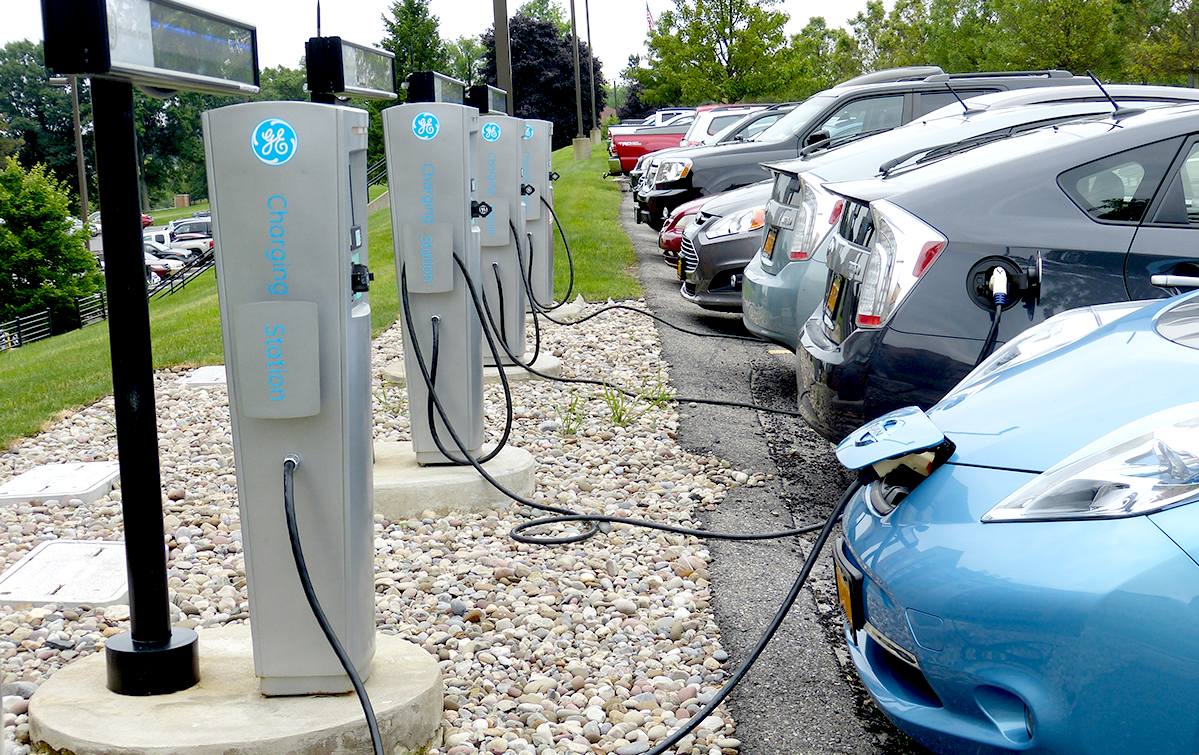
THE
SLOW LANE - We all
live fast lifestyles. Waiting 30 or even 10 minutes for rapid charging, even with smart
technology, potentially strains
the grid, your patience and also damages batteries.
There
are faster ways of refuelling an electric
vehicle, in just a couple of minutes, especially unmanned vehicles
that need an automated service, such a HGVs
and robotaxis. Battery
and hydrogen is in the running despite inefficiencies in the conversion
chain, with development of liquid
hydrogen and high
pressure hydrogen containers likely in the next 3-5 years, dependent
on political will.
13.
Information for users of public charging or refuelling points
(1) Regulations may require operators of public charging or refuelling
points to make available prescribed information relating to such points.
(2) The information that may be prescribed under subsection (1) in
relation to a public charging or refuelling point is such information as
the Secretary of State considers likely to be useful to users or potential
users of the point, for example information about —
(a) the location of the point and its operating hours,
(b) available charging or refuelling options,
(c) the cost of obtaining access to the use of the point,
(d) the method of payment or other way by which access to the use of the
point may be obtained,
(e) means of connection to the point,
(f) whether the point is in working order, and
(g) whether the point is in use.
(3) The regulations may make provision —
(a) about when, how, to whom and in what form the information is to be
made available;
(b) for the information to be made available without restrictions on its
use and disclosure.
(4) The regulations may be made so as to have effect for a prescribed
period.
14.
Transmission of data relating to charge points
(1) Regulations may make provision for the purpose of ensuring the ongoing
transmission of charge point data to a prescribed person or to persons of
a prescribed description.
(2) “Charge point data” means prescribed information relating to a
charge point (which may include information about energy consumption and
geographical information).
(3) Regulations under subsection (1) may impose requirements —
(a) on operators of charge points that are provided for use by members of
the general public, and
(b) in relation to charge points that are not provided as mentioned in
paragraph (a), on prescribed persons or persons of a prescribed
description (subject to subsection (4)).
(4) Regulations under subsection (1) may not impose requirements on owners
or occupiers of domestic premises.
(5) Regulations under subsection (1) may make provision about when, how
and in what form charge point data is to be transmitted.
15.
Smart charge points
(1) Regulations may provide that a person must not sell or install a
charge point unless it complies with prescribed requirements.
(2) The requirements that may be imposed under subsection (1) include
requirements relating to the technical specifications for a charge point,
including for example the ability of a charge point —
(a) to receive and process information provided by a prescribed person,
(b) to react to information of a kind mentioned in paragraph (a) (for
example, by adjusting the rate of charging or discharging),
(c) to transmit information (including geographical information) to a
prescribed person,
(d) to monitor and record energy consumption,
(e) to comply with requirements relating to security,
(f) to achieve energy efficiency, and
(g) to be accessed remotely.
(3) Regulations under subsection (1) may also prescribe requirements to be
met in relation to the sale or installation of a charge point.
(4) In this section —
(a) “sell” includes let on hire, lend or give;
(b) references to a prescribed person include references to —
(i) a person of a prescribed description, and
(ii) a device operated by one or more prescribed persons.
General and supplementary
16.
Enforcement
(1) Regulations under this Part may make provision for enforcement in
connection with a contravention of a requirement or prohibition imposed by
the regulations.
(2) Regulations made by virtue of subsection (1) may, for example —
(a) contain provision for determining whether there has been a failure to
comply with a requirement or prohibition;
(b) provide for the imposition of a financial penalty (and for the payment
of such a penalty into the Consolidated Fund);
(c) set out the procedure to be followed in imposing a penalty;
(d) make provision about the amount of a penalty;
(e) make provision about the enforcement of a penalty;
(f) provide for a right of appeal against the imposition of a penalty;
(g) provide for a determination for the purposes of the regulations to be
made by the Secretary of State or a prescribed person.
(3) The provision referred to in subsection (2)(a) includes —
(a) provision authorising a prescribed person to enter any land in
accordance with the regulations;
(b) provision for the inspection or testing of any thing by a prescribed
person, which may for example include provision about —
(i) the production of documents or other things,
(ii) the provision of information,
(iii) the making of photographs or copies, and
(iv) the removal of any thing for the purpose of inspection or testing and
its retention for that purpose for a reasonable period.
17.
Exceptions
(1) Regulations under this Part may create exceptions from any requirement
or prohibition imposed by the regulations.
(2) An exception may be created in relation to a prescribed description of
persons or devices.
(3) The Secretary of State may determine that a requirement or prohibition
imposed by regulations under this Part does not apply in relation to a
person or device specified in the determination.
(4) The Secretary of State must publish a determination made under
subsection (3).
18.
Regulations
(1) Regulations under this Part —
(a) may make different provision for different purposes or different
areas;
(b) may make supplemental, incidental, transitional or consequential
provision.
(2) A power to make regulations under this Part is exercisable by the
Secretary of State by statutory instrument.
(3) Before making regulations under this Part, the Secretary of State must
consult such persons as the Secretary of State considers appropriate.
(4) Subject to subsection (7), where —
(a) a statutory instrument contains regulations under this Part, and
(b) any of those regulations are the first regulations under a provision
of this Part,
the instrument may not be made unless a draft of it has been laid before
Parliament and approved by a resolution of each House.
(5) Where —
(a) a statutory instrument contains regulations under section 11 (large
fuel retailers etc), and
(b) the regulations amend the definition of “large fuel retailer” or
“service area operator”,
the instrument containing the regulations may not be made unless a draft
of it has been laid before Parliament and approved by a resolution of each
House.
(6) A statutory instrument containing regulations under this Part none of
which are —
(a) the first regulations under a provision of this Part, or
(b) regulations to which subsection (5) applies,
is subject to annulment in pursuance of a resolution of either House of Parliament.
(7) Where regulations contain only provision made by virtue of —
(a) section 10(3) or (4) (prescribed requirements for public charging or
refuelling points or for connecting components), or
(b) section 15 (prescribed requirements for charge points),
the instrument containing the regulations is subject to annulment in
pursuance of a resolution of either House of Parliament.
(8) If a draft of a statutory instrument containing relevant section
11(1)(a) regulations would, apart from this subsection, be treated for the
purposes of the standing orders of either House of Parliament as a hybrid
instrument, it is to proceed in that House as if it were not such an
instrument.
(9) In subsection (8) “relevant section 11(1)(a) regulations” means
regulations under section 11(1)(a) that are made pursuant to section 12
(duty to consider making regulations under section 11(1)(a) on request by
elected mayor).
19.
Report by Secretary of State on operation of this Part
(1) The Secretary of State must, in respect of each reporting period,
prepare a report assessing —
(a) the impact and effectiveness of regulations made under this Part;
(b) the need for regulations to be made under this Part during subsequent
reporting periods.
(2) Each report must be laid before Parliament after the end of the
reporting period to which it relates.
(3) The first reporting period is the period of two years beginning with
the day on which this Act is passed.
(4) Each subsequent period of 12 months after the first reporting period
is a reporting period.
PART 3 Miscellaneous and general
20.
Minor and consequential amendments
21. Commencement
22. Extent
23. Short title
20 Minor and consequential amendments
(1) The Schedule (minor and consequential amendments) has effect.
(2) The Secretary of State may by regulations make provision that is
consequential on any provision made by this Act.
(3) The power to make regulations under this section is exercisable by
statutory instrument.
(4) Regulations under this section may amend any enactment passed or made
before this Act or in the same Session.
(5) A statutory instrument containing regulations under this section any
of which amend primary legislation may not be made unless a draft of the
instrument has been laid before Parliament and approved by a resolution of
each House.
(6) A statutory instrument containing regulations under this section none
of which amends primary legislation is subject to annulment in pursuance
of a resolution of either House of Parliament.
(7) In this section —
“amend” includes repeal or revoke;
“primary legislation” means —
(a) an Act of Parliament;
(b) an Act of the Scottish Parliament;
(c) an Act or Measure of the National Assembly for Wales;
(d) Northern Ireland legislation.
21
Commencement
(1) This Act comes into force on whatever day or days the Secretary of
State appoints by regulations.
(2) Subsection (1) does not apply to the following provisions of this Act
(which come into force on the day on which this Act is passed) —
(a) section 20(2) to (7);
(b) this section;
(c) sections 22 and 23.
(3) The power to make regulations under this section is exercisable by
statutory instrument.
(4) Regulations under this section
—
(a) may appoint different days for different purposes or different areas;
(b) may make transitional, transitory or saving provision.
22
Extent
(1) Part 1 extends to England and Wales and Scotland.
(2) Part 2 extends to England and Wales, Scotland and Northern Ireland.
(3) An amendment made by the Schedule has the same extent as the provision
to which it relates.
23
Short title
This Act may be cited as the Automated and Electric Vehicles Act 2018.

MAY
2021 ENTHUSIASTIC ADVOCATE -
Hoping for
cities that don't cause lung
cancer, free of diesel particulates, Ryan from Sussex, can't wait to
drive his first electric car. If they start developing a versatile EV
infrastructure now, the cars he operates when he is old enough to drive, could fill up with clean
renewable green
hydrogen from smarter service stations.

APRIL
2020 -
A lack of
commitment from policy makers is a major disincentive to develop
innovation like this, still waiting on the shelf for funding. There is no
point filing for patent protection too early, and without some kind of
support, to help offset the inherent risks.
The
idea was first conceived in 1991, when the California
Air Resources Board, the UK's Dti and Australia's Energy Commission -
all said they did not consider fast energy exchanges worth bothering with.
How about now with global warming reaching a critical tipping point! We
wonder if that will make any difference, or if we'll be reporting no
movement in another thirty years, from a flooded world with mainly deserts
and bushfires
in 2051. By then Greta
Thunberg will be 48 years old, having watched the world burn.
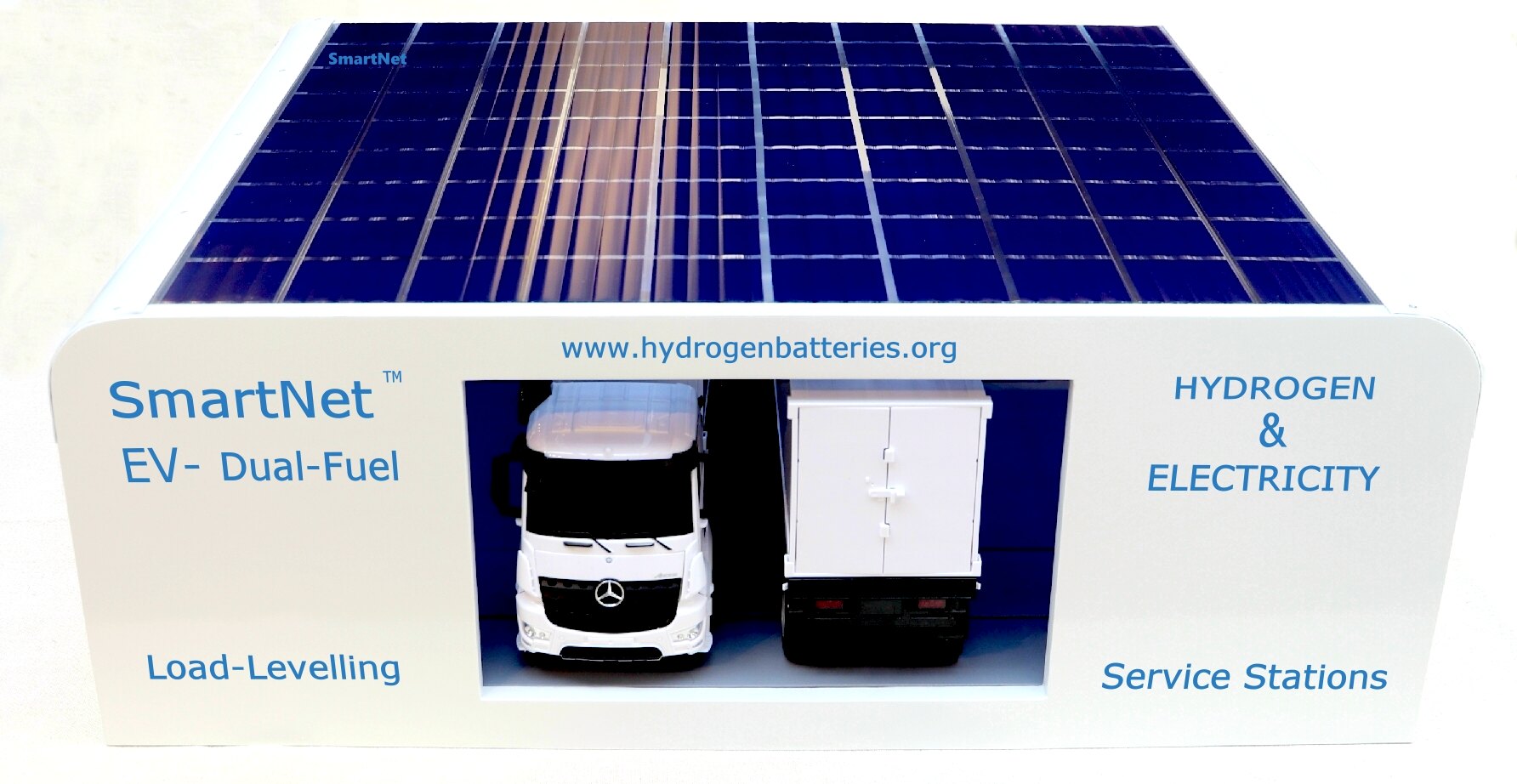
MAY
27 2021 -
These little
beauties could provide the answer to putting clean renewable hydrogen on
everyone's doorstep. They are flat-pack service stations that also charge
ordinary battery and hydrogen powered EVs, and load-level for TSOs
and DSOs. The secret is in the way energy is stored and then
delivered. The world needs around 600,000 such facilities to escape from
our present bondage to oil.
SCHEDULE
of MINOR AND CONSEQUENTIAL AMENDMENTS
Prescription and Limitation (Scotland) Act 1973 (c. 52)
1 In section 17 of the Prescription and Limitation (Scotland) Act 1973
(actions in respect of personal injuries not resulting in death), after
subsection (1) insert —
“(1A) This section does not apply to an action of damages in respect of
personal injuries to which section 18ZA applies.”
2 In section 18 of that Act (actions where death has resulted from
personal injuries), after subsection (1) insert —
“(1A) This section does not apply to an action of damages in respect of
personal injuries or death to which section 18ZA applies.”
3 After that section insert —
“18ZA Actions under section 2 of the Automated and Electric Vehicles Act
2018
(1) This section applies to an action of damages under section 2 of the
2018 Act (liability of insurers etc where accident caused by automated
vehicle).
(2) An action may not be brought after the expiry of the period of 3 years
beginning with —
(a) the date of the accident mentioned in subsection (1) or (as the case
may be) subsection (2) of that section, or
(b) where subsection (3) applies, the date on which the person who
sustained the injuries first became aware of the facts mentioned in
subsection (4) (if later).
(3) This subsection applies where the damages claimed consist of or
include damages in respect of personal injuries (to the pursuer or any
other person).
(4) The facts are —
(a) that the injury in question was significant;
(b) that the injury was attributable in whole or in part to an accident
caused by an automated vehicle when driving itself; and
(c) the identity of the insurer of the vehicle (in the case of an action
under section 2(1) of the 2018 Act) or the owner of the vehicle (in the
case of an action under section 2(2) of that Act).
(5) Expressions used in subsection (4) that are defined for the purposes
of Part 1 of the 2018 Act have the same meaning in that subsection as in
that Part.
(6) In the computation of the period specified in subsection (2) above any
time during which the person who sustained the injuries was under legal
disability by reason of nonage or unsoundness of mind is to be
disregarded.
(7) If a person injured in the accident dies before the expiry of the
period mentioned in subsection (2) above, an action may not be brought
after the expiry of the period of 3 years beginning with —
(a) the date of death of the person, or
(b) where subsection (3) applies, the date on which the pursuer first
became aware of the facts mentioned in subsection (4) (if later).
(8) Where an action has not been brought before the expiry of the period
mentioned in subsection (2) above and the person subsequently dies in
consequence of injuries sustained in the accident, an action may not be
brought in respect of those injuries or that death.
(9) Subsection (10) applies if a person injured in the accident dies and
the person seeking to bring the action is a relative of the deceased.
(10) In the computation of the period specified in subsection (7) any time
during which the relative was under legal disability by reason of nonage
or unsoundness of mind is to be disregarded.
(11) In this section —
“the 2018 Act” means the Automated and Electric Vehicles Act 2018;
“relative” has the same meaning as in the Damages (Scotland) Act 2011.
18ZB Section 18ZA: extension of limitation periods
(1) Subsection (2) applies where a person would be entitled, but for
section 18ZA, to bring an action other than one in which the damages
claimed are confined to damages for loss of or damage to property.
(2) The court may, if it seems to it equitable to do so, allow the person
to bring the action despite that section.
18ZC Actions under section 5 of the Automated and Electric Vehicles Act
2018
(1) Subsection (2) applies where, by virtue of section 5 of the Automated
and Electric Vehicles Act 2018 (right of insurer etc to claim against
person responsible for accident), an insurer or vehicle owner becomes
entitled to bring an action against any person.
(2) The action may not be brought after the expiry of the period of 2
years beginning with the date on which the right of action accrued (under
subsection (5) of that section).”
4 In section 19CA of that Act (interruption of limitation period:
arbitration), in subsection (1), after “18(2),” insert “18ZA(2) or
(7), 18ZC(2),”.
5 In section 19F of that Act (extension of limitation periods:
cross-border mediation), in subsection (1), after “18,” insert
“18ZA, 18ZC,”.
6 In section 22 of that Act (interpretation of Part 2 and supplementary
provisions), in subsection (2) —
(a) for “or 18A” substitute “, 18A or 18ZA”;
(b) after “the said section 18A” insert “or subsection (3) or (7)(b)
of the said section 18ZA”.
7 In Schedule 1 to that Act (obligations affected by prescriptive periods
of 5 years under section 6), in paragraph 2, after sub-paragraph (g)
insert—
“(ga) to any obligation to make reparation arising from liability under
section 2 of the Automated and Electric Vehicles Act 2018 (liability of
insurer etc. where accident caused by automated vehicle);”.”.
Limitation Act 1980 (c. 58)
8 In section 9 of the Limitation Act 1980 (time limit for actions for sums
recoverable by statute), in subsection (2), after “section 10” insert
“or 10A”.
9 After section 10 of that Act insert—
“10A Special time limit for actions by insurers etc in respect of
automated vehicles
(1) Where by virtue of section 5 of the Automated and Electric Vehicles
Act 2018 an insurer or vehicle owner becomes entitled to bring an action
against any person, the action shall not be brought after the expiration
of two years from the date on which the right of action accrued (under
subsection (5) of that section).
(2) An action referred to in subsection (1) shall be one to which sections
32, 33A and 35 of this Act apply, but otherwise Parts 2 and 3 of this Act
(except sections 37 and 38) shall not apply for the purposes of this
section.”
10 In the italic heading before section 11 of that Act, after “personal
injuries or death” insert “etc”.
11 After section 11A of that Act insert —
“11B Actions against insurers etc of automated vehicles
(1) None of the time limits given in the preceding provisions of this Act
shall apply to an action for damages under section 2 of the Automated and
Electric Vehicles Act 2018 (liability of insurer etc where accident caused
by automated vehicle). But this subsection does not affect the application
of section 5A of this Act.
(2) An action for damages against an insurer under subsection (1) of
section 2 of the Automated and Electric Vehicles Act 2018 (including an
action by an insured person under a contract of insurance in respect of
the insurer’s obligations under that section) shall not be brought after
the expiration of the period of three years from —
(a) the date of the accident referred to in that subsection; or
(b) where subsection (3) below applies, the date of knowledge of the
person injured (if later).
(3) This subsection applies where the damages claimed consist of or
include damages in respect of personal injuries (to the claimant or any
other person).
(4) An action for damages against the owner of a vehicle under subsection
(2) of that section shall not be brought after the expiration of the
period of three years from —
(a) the date of the accident referred to in that subsection; or
(b) where subsection (3) above applies, the date of knowledge of the
person injured (if later).
(5) If a person injured in the accident dies before the expiration of the
period mentioned in subsection (2) or (4) above, the period applicable as
respects the cause of action surviving for the benefit of the person’s
estate by virtue of section 1 of the Law Reform (Miscellaneous Provisions)
Act 1934 shall be three years from —
(a) the date of death; or
(b) where subsection (3) above applies, the date of the personal
representative’s knowledge (if later).
(6) If there is more than one personal representative, and their dates of
knowledge are different, subsection (5)(b) above shall be read as
referring to the earliest of those dates.
(7) In this section “personal representative” has the same meaning as
in section 11 of this Act.”
12 In section 12 of that Act (special time limit for actions under Fatal
Accidents legislation), in subsection (1), for “or 11A” substitute
“, 11A or 11B”.
13 (1) Section 14 of that Act (definition of date of knowledge for
purposes of sections 11 and 12) is amended as follows.
(2) In the heading, for “sections 11 and 12” substitute “sections 11
to 12”.
(3) In subsection (1), for “subsection (1A)” substitute “subsections
(1A) and (1B)”.
(4) After subsection (1A) insert —
“(1B) In section 11B of this Act and in section 12 of this Act so far as
that section applies to an action by virtue of section 6(1)(a) of the
Automated and Electric Vehicles Act 2018 (“the 2018 Act”) (death
caused by automated vehicle) references to a person’s date of knowledge
are references to the date on which he first had knowledge of the
following facts —
(a) that the injury in question was significant; and
(b) that the injury was attributable in whole or in part to an accident
caused by an automated vehicle when driving itself; and
(c) the identity of the insurer of the vehicle (in the case of an action
under section 2(1) of the 2018 Act) or the owner of the vehicle (in the
case of an action under section 2(2) of that Act).
Expressions used in this subsection that are defined for the purposes of
Part 1 of the 2018 Act have the same meaning in this subsection as in that
Part.”
14 In section 28 of that Act (extension of limitation period in case of
disability), in subsection (6), after “section 11” insert “, 11B”.
15 (1) Section 32 of that Act (postponement of limitation period in case
of concealment etc) is amended as follows.
(2) In subsection (1), for “and (4A)” substitute “, (4A) and
(4B)”.
(3) After subsection (4A) insert —
“(4B) Subsection (1) above shall not apply in relation to the time limit
prescribed by section 11B(2) or (4) of this Act or in relation to that
time limit as applied by virtue of section 12(1) of this Act.”
16 (1) Section 33 of that Act (discretionary exclusion of time limit) is
amended as follows.
(2) In subsection (1), in paragraph (a), for “or 11A” substitute “,
11A, 11B”.
(3)
After subsection (1A) insert—
“(1B)
Where the damages claimed are confined to damages for loss of or damage to
any property, the court shall not under this section disapply any
provision in its application to an action under section 2 of the Automated
and Electric Vehicles Act 2018.”
(4)
In subsections (2) and (4), for “or subsection (4) of section 11A”
substitute “, 11A(4) or 11B(2) or (4)”.
(5)
In subsection (3)(b), after “section 11A” insert “, by section
11B”.
(6)
In subsection (8), for “or 11A” substitute “, 11A or 11B”.
Road
Traffic Act 1988 (c. 52)
17
In section 143 of the Road Traffic Act 1988 (users of motor vehicles to be
insured or secured against third-party risks), after subsection (1) insert
—
“(1A)
In the application of this Part to automated vehicles —
(a) subsection (1) above has effect with the omission of the words “or
such a security in respect of third party risks” in paragraphs (a) and
(b);
(b) this Part has effect with the omission of sections 146 and 147(2);
(c) any other references to a security or certificate of security in this
Act are to be ignored.””
18 In section 144 of that Act (exceptions from requirement of third-party
insurance etc), in subsection (1), after “does not apply to a vehicle”
insert “, other than an automated vehicle,”.
19 (1) Section 145 of that Act (requirements in respect of policies of
insurance) is amended as follows.
(2) After subsection (3) insert —
“(3A)
In the case of an automated vehicle, the policy must also provide for the
insurer’s obligations to an insured person under section 2(1) of the
Automated and Electric Vehicles Act 2018 (liability of insurers etc
where accident caused by automated vehicle) to be obligations under the
policy. In this subsection “insured person” means a person who is
covered under the policy for using the vehicle on a road or public place
in Great Britain.”
(3) At the end of subsection (4) insert — “Paragraph (a) does not
apply where the vehicle in question is an automated vehicle.”
20 In section 161 of that Act (interpretation), in subsection (1), at the
appropriate place insert —
““automated vehicle” means a vehicle listed by the Secretary of
State under section 1 of the Automated and Electric
Vehicles Act 2018,”.
21 In section 162 of that Act (index to Part 6), at the appropriate place
in the table insert —
UK
CABINET POLICY MAKERS - APRIL 2020 - 2021
Chris
Grayling and Baroness Sugg sponsored this Bill in 2017. Our thanks go
to all members of Parliament
and supporting staff for passing this important legislation, for the sake
of the
planet and all those species
who cannot fend for themselves. We are looking forward to COP
26 in Glasgow, November 2021, hoping that the United
Nation's members decide to get into top gear, with zero
emissions transport.
EUROPEAN
AUTO MANUFACTURERS INCLUDE:
-
Alfa
Romeo
-
Audi
-
BMW
-
Citroen
-
Fiat
-
Ford
-
Lotus
-
Mercedes
-
Peugeot
-
Renault
-
Seat
-
Smart
-
Volkswagen
MAKES
OF ELECTRIC TRUCKS
-
DAF
-
MAN
-
Mercedes
Benz
-
Renault
-
Volkswagen
-
Volvo
MAKES
OF ELECTRIC BUSES & COACHES
-
BDY
-
ASHOK
LEYLAND
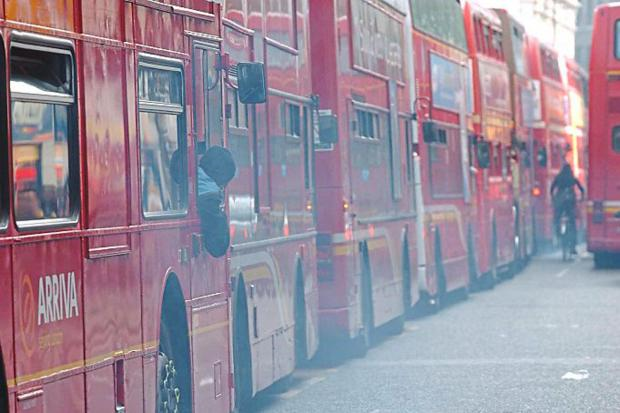
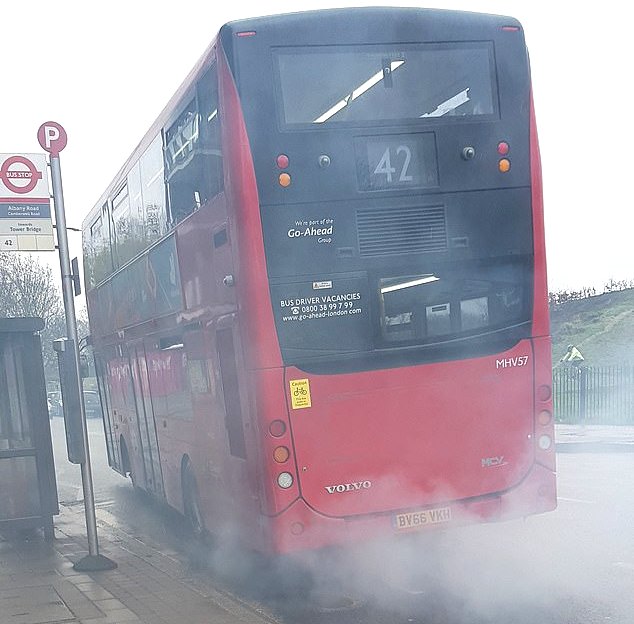
CANCER
- Many of the compounds released during burning of hydrocarbons are associated with
cancer and often cause short irritation of the respiratory tract and eyes.
Motor vehicle emissions contribute to air pollution and are a major ingredient in the creation of smog in some large cities. A 2013 study by MIT indicates that 53,000 early deaths occur per year in the United States alone because of vehicle emissions. According to another study from the same university, traffic fumes alone cause the death of 5,000 people every year just in the United Kingdom.
SOME
OF THE BIGGEST ELECTRICITY POWER COMPANIES A - Z
Duke
Energy Corporation, DUK, N. Carolina, USA
Dominion
Energy Inc., Richmond, Virginia
EDF
Électricité de France SA
ENEL
Engie
E.ON
Exelon
Corporation EXC, Chicago, USA
GE
General Electric
Iberdrola
KEPCO
Korean Electric Power Corporation
National
Electric Grid & Central Electricity Authority (India)
National
Energy Board (Canada)
National
Grid plc (formerly Central Electricity Generating Board UK)
Next
Era Energy Inc. Florida, USA
Scottish
& Southern Energy
Southern
Company, Atlanta, Alabama, Georgia, Mississippi, USA
State
Grid Corporation of China
TEPCO
Tokyo
Electric Power Company
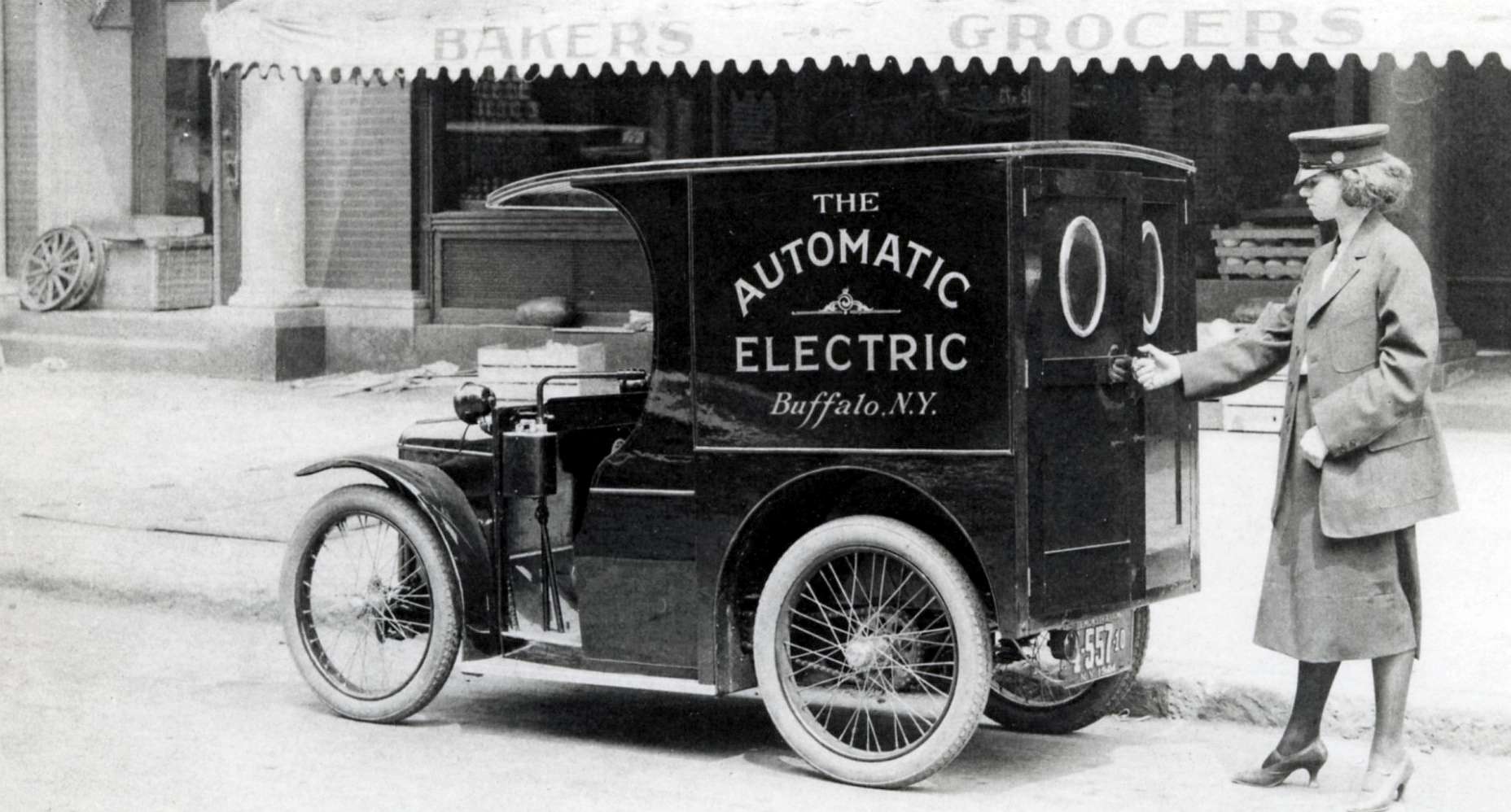
1921
- A chain driven electrically powered van in Buffalo, N.Y. It was called an
automatic, because there was no gearbox. They were easier to drive and did
not need starter handles that most women could not manage, hence this
picture advertising a lady operator. Professor
Ferdinand Porsche invented battery cartridge exchange in the early 1900s.
This was for his electric
cars. He also even invented the hybrid, where a petrol
generator charged the onboard batteries that powered electric hub motors.
|















